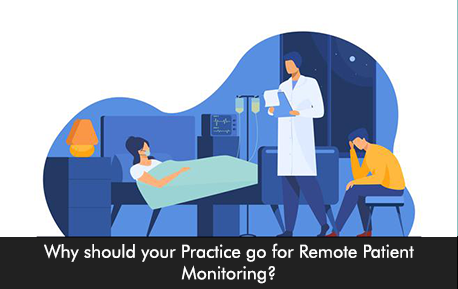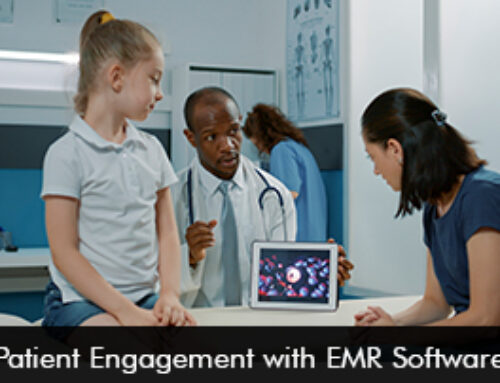The COVID-19 pandemic has changed the healthcare landscape as patients are looking out for ways to receive prompt and safe care. A survey conducted by Capterra in May 2020 revealed that 51% of patients are not comfortable with in-person visits with their doctors during the pandemic as they fear catching the virus.
Patients that have underlying health conditions such as extreme blood pressure and other heart ailments are high-risk patients for COVID-19. Such patients need to be extra cautious but also require on-going healthcare services from their practitioners to monitor their health conditions. Due to the pandemic, remote patient monitoring technology gained a lot of popularity because of its effectiveness in diagnosing and treating patients from the comfort of their homes.
What is Remote Patient Monitoring?
Remote patient monitoring (RPM) is when healthcare professionals use mobile devices and communication technology solutions to monitor different patient’s conditions. Wearable sensors or monitoring devices are used by patients that effectively capture important data such as BP, sugar levels, heart rate, and weight. The robust devices then transfer this data to the practitioner for them to evaluate patient conditions without patients having to visit their clinic.
By analyzing data healthcare providers can offer the best treatment options to their patients and can decide if a virtual session can work for patient care. Technology advancements in cloud-based computing, cellular networks, and Telemedicine EMR Software solutions have boosted remote patient monitoring.
Advantages of Remote Patient Monitoring to your Medical Practice
Remote patient monitoring is expected to grow in the next 12 months which means that practices should be aware of the relevant benefits of RPM. Practices should start investing in remote patient monitoring tools as patients feel more comfortable with remote care opportunities provided to them. An investment now can mean your practice can grow even during the pandemic and maintain consistent a revenue stream.
- Decrease the risk of getting an infection at your clinic – Through remote patient monitoring solutions healthcare providers can effectively monitor various patient conditions without having to visit their office. This means that both the medical staff members and the patient is kept safe from getting an infection. The effectiveness of remote patient monitoring also reduces the need for unnecessary hospital visits which reduces hospital traffic which is an absolute in during a global crisis.
- Get new patients onboard living in remote areas – Even once the pandemic is over patients living in the remote or rural areas will continue to use remote patients monitoring as this facility gives them easy access to doctors who can use sensors to monitor patient conditions. Patients who are old with underlying conditions and cannot visit the doctor’s office can use RPM to manage chronic health conditions from their homes.
- Enhance the quality of care – Remote patient monitoring helps to provide a better quality of care as doctors have quick access to data that can support quick decision making and offer timely treatment which can ultimately improve patient outcome levels. Chronic conditions make part of 90% of costs in the United States with RPM chronic care management can improve. RPM also improves that patient experience as they don’t have to visit the hospital to get their underlying conditions monitored.
- Better pay-offs in the long run – Remote patient monitoring indeed requires big investment by practices this includes medical equipment and the software requirements. However one can’t deny the fact that this investment will lead to great profits in the long-run. RPM opportunities are available to a greater group of Medicare patients and it’s sensible to invest now. Patients now expect their clinicians to offer remote care services so they can be monitored and treated at the right time.
Embrace Technology Solutions
Healthcare has been revolutionized through the use of wearable technology, monitoring tools, software systems, and the telemedicine platform. It is advised that your practice understands that without these solutions your practice will not be able to grow. It is necessary to embrace technology solutions to streamline clinical, financial, and administrative workflows to enhance patient care and improve the financial health of your practice.







